On autumn Saturdays, it’s where you’ll find the Gorilla football team, Crimson & Gold Dancers, Spirit Squad, Pride of the Plains Marching Band, and thousands of fans taking part in one of the oldest traditions at Pittsburg State.
On spring days, it’s where national champions on the Pitt State Track and Field team strive to continue to set records, and where children from local elementary schools run in their own track meets and dream of glory.
On summer days, it’s an iconic backdrop for those picnicking and fishing at University Lake.
And on Nov. 11, 2024, Carnie Smith Stadium turns 100.
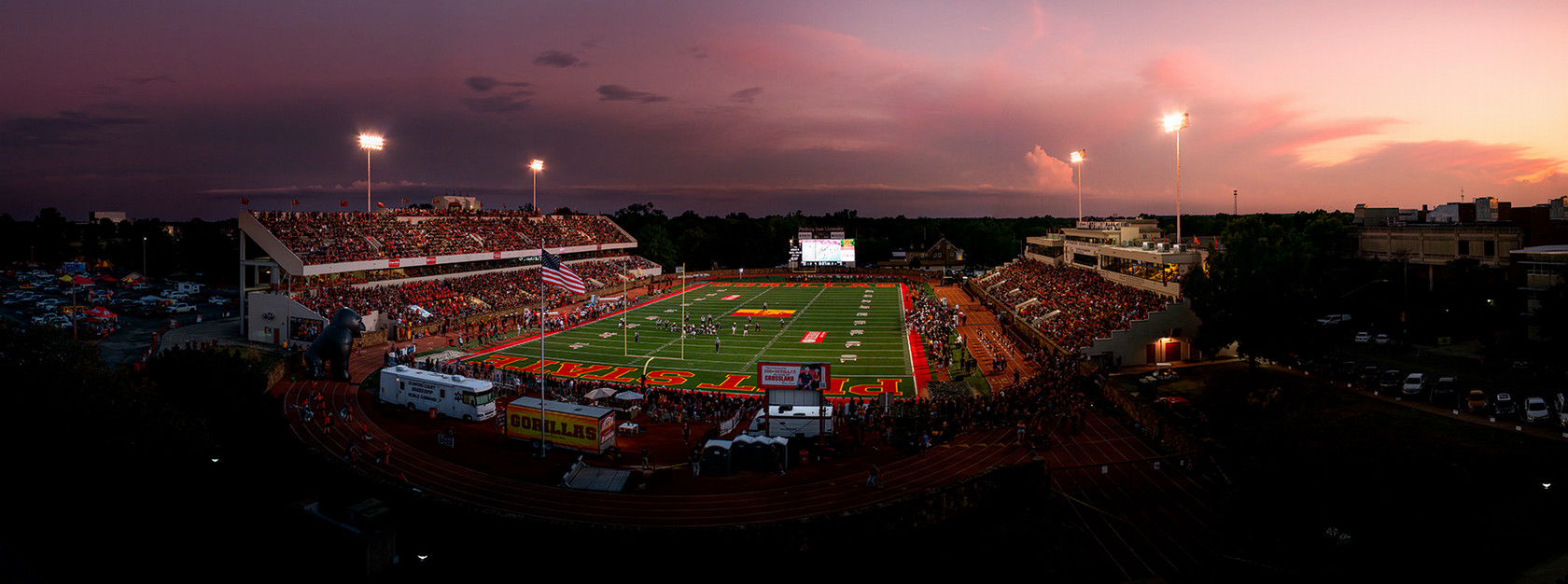
The first athletics field was an open field lined with parked cars, standing spectators, and a small set of wooden bleachers near area of what now is referred to the Oval. But construction of a science building, gymnasium, and cafeteria – near where today’s Overman Student Center now stands -- meant that field needed to move.
It seemed like state funding for a permanent stadium would be impossible to get, so the Stadium Committee sought donations from students, faculty, staff, alumni, and Pittsburg citizens.
In 1922, a motion was passed at a meeting in the college’s chapel to proceed with a $100,000 public campaign to build a new stadium. The goal was to raise $30,000 from students (about $30 per student), $30,000 from alumni, $12,000 from faculty and staff, and the remaining $25,000 from the community.
The first portion of funds, $60,000, came from 1,484 faculty and staff, students, and alumni and 332 Pittsburg citizens.
In Summer 1923, grading began on the field. The first concrete for the west stadium was poured on March 3, 1924.
Every male faculty member was required to contribute eight hours each week to work on the stadium’s construction. Their work was supervised by faculty member S.O. Householder.
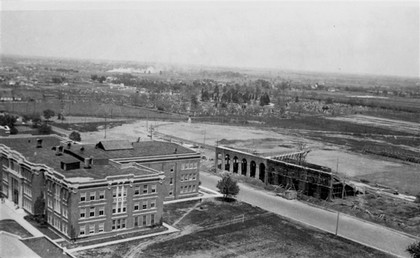
The first section, the west stands, seated 5,000 spectators. Electric flood lighting for night games was installed on the field.
To show their appreciation for the president’s cooperation and enthusiasm, backers of the project asked that the new facility be named after President William A. Brandenburg, and for many years, it was called Brandenburg Field.
Relief sculptures of a football player and a discus thrower, a gift from the Class of 1924, adorned the stadium and still are there today.
The first scrimmage on the new field was played on Sept. 26, 1924. The first football contest on Oct. 11, 1924, saw the Gorillas beat Baker University 6-0. The Collegio estimated 4,000 fans watched the game in the west stands.
The stadium and field officially were dedicated on Armistice Day, Nov. 11, 1924.
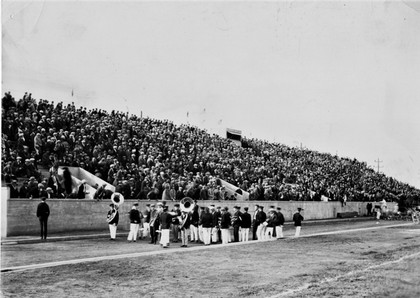
The college band helped the crowd cheer the team to an inaugural 12-2 victory over Friends University, and Lavonne Cranston Monroe, a freshman from McCune, was crowned the first Stadium Queen.
In Spring 1939, using funds from the Works Progress Administration (WPA – part of the New Deal), construction began on the massive sandstone wall to encircle the field. The federal government allotted $25,398 and the remaining $13,000 was to be taken from the Athletics fund savings. The now-iconic wall, often used by Gus Gorilla, replaced many yards of canvas that had been stretched around the ends of the stadium.
The east stands, seating an additional 3,000, were completed in 1940. Construction plans for the second phase also included a new press box on the west side and the long-awaited east stands.
A 1948 photograph (below) shows married students and their families gathered behind the stadium. Historical records show that due to a housing shortage at that time, the college allowed some married students to park their mobile trailers on the east side, underneath the stadium and by what was called College Lake (now University Lake).
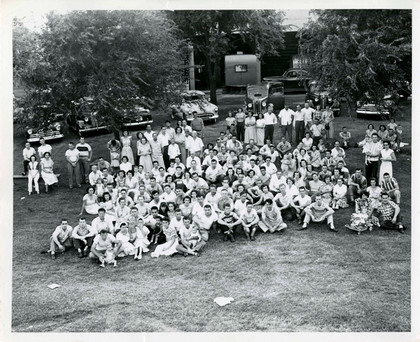
Mass band halftime shows by dozens of area high school bands were a Homecoming Day tradition for many years, through at least the 1990s.
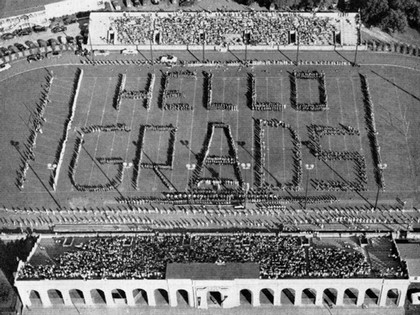
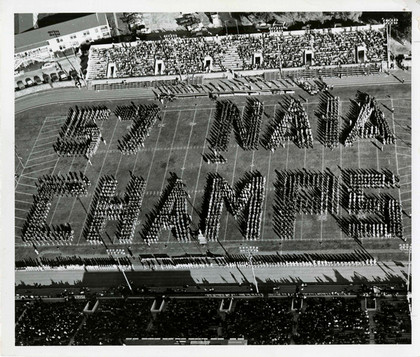


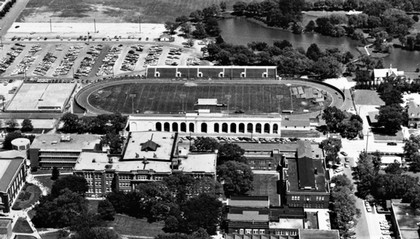
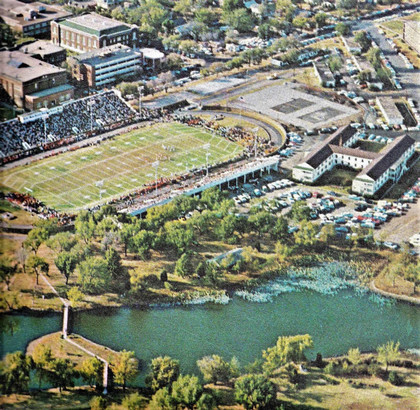
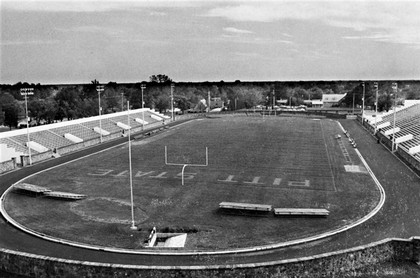
In Spring 1989, renovation of the track was complete.
It was named the Prentice Gudgen Track in honor of a track coach who led Pitt State teams to six conference championships. He was a longtime professor and chair of the Physical Education Department, organized athletic contests including the Pittsburg Relays, and served as Director of Intercollegiate Athletics.
Also that year, a new press box was added and named after August and Helen Rua, who donated funds for major renovations to the football stadium and field between 1986 and 1989.
August was an alumnus who entered the insurance business after graduating in 1955. He was co-founder and president of the Alumni Foundation and served as a member of the alumni board of directors.
The stadium was rededicated as the Carnie Smith Stadium in honor of the legendary football coach who led the Gorillas to two NAIA national championships (1957 and 1961) and six conference titles during his 17-year tenure (1949-1966).
William A. Brandenburg’s name remained on the field.
In 2001, second-level seating was added on the east side along with 16 luxury skybox suites, elevator access, new restrooms, concession stands, ticket booths and renovated locker rooms. The project also added 2,300 seats.
In 2006, eight luxury skybox suites were added to the west side of the stadium along with elevator access.
In 2008, the stadium’s first-ever video board, the “Jungletron,” was unveiled to provide fans with 2,800 square-feet of vibrant video and scoring updates. It remains the largest university stadium video board in Kansas.
Each of these projects was funded by private donations from students, faculty, alumni and community members, just as when the original stadium was built.
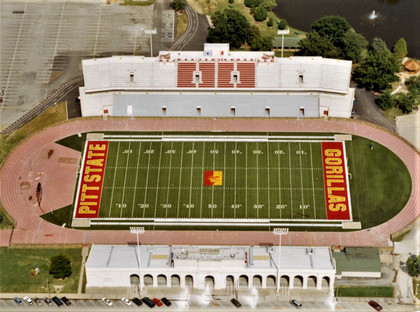
Milestone moments by individual athletes and by teams in the stadium – and there have been many – have been well documented by Pitt State Athletics.
But some milestone moments aren’t officially documented – they are the moments we remember because they were special.
For Linda Brown Wilson ('91), those moments started as a student and later, were with family.
“My fondest memories were playing in Pittsburg High School Band with all the other area bands at the game on Homecoming, then, in the ‘90s, being with my son, daughter-in-law, and grandsons, cheering on the Gorillas as they headed to Florence, Alabama for a National Championship,” she said.
Thomas Gregory ('12) recalls sitting on top of the Sigma Tau house to the south watching John Brown and the Gorillas defeat Delta State during the championship run in 2011.
“Living right next to the stadium for two years was amazing,” he said. “I always claimed my spot on the fire escape bright and early.”
Wally Wood, a faculty member from 1974-77 and sponsor and chaperone for the cheerleaders, watched every home game. His best memory?
“Breaking five minutes for the mile at the Intramural Track Meet there in 1977,” he said.
Connor Frazell (‘15) said his best memories were on the field as an athlete.
“I kicked many footballs through the uprights at Carnie Smith! The best years of my life were spent there while playing,” he said.
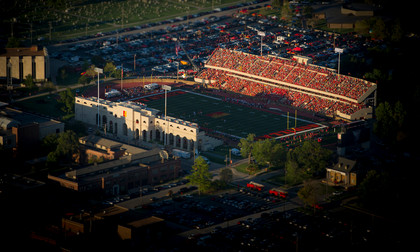
Memories for Steve Allen Chastain Jr. ('12) began with participating in the Homecoming Yell Like Hell competition as a member of Student Government Association and Phi Sigma Kappa, and continued with bringing his children down to enjoy Game Day.
“Pittsburg State University has the best D-II atmosphere,” he said.
Howard Murray ('68) has played three roles at the stadium.
“I had the opportunity to play football in 1964, be a member of the track team from 1964 to 1968, and coach as a graduate assistant at the stadium in 1969,” he said.
For others, it was a job, but one that still evokes fond memories. Justin Beasley said “photographing athletes at Carnie Smith Stadium from 1993 to 2019 has given me lifelong memories!” and Dina Horgan (‘91) also has her share.
“I worked for the University PR/Sports Information Office as a student from 1987-1991. We kept stats for all the home football games. When I started, it was before the Rua Press Box was redone. The old press box used to shake like crazy when the cannon went off!"
For Andy Majors ('06), his fondest memory is a personal one.
“I proposed to my wife, A.J. Majors, on that field in the north endzone on the ‘A’ of the word State,” he said. “I scored lots of TDs in that endzone, but that was the best one.”
Similarly, memories for Millie Sauers Bayne ('73) are personal.
“I finished my drill team thing at halftime and went up in the stands to join the crowd from Tanner Hall – newly coed,” she said. “I noticed the new guy who had just returned from his tour in ‘Nam sitting by himself, looking very cold. I invited him to come join our group and share my blanket. We’ve been married 53 years.”
Author’s note: My two fondest memories in Carnie Smith Stadium were as a student, when I first marched as a member of the Pride of the Plains Band through the southwest gate in parade formation (the era that predated Game Day Gorilla Walk and the pep rally), and as a parent, when I watched my son march into the stadium as a member of that same band.
Sources:
Pittsburg State University: A Photographic History of the First 100 Years, by Randy E. Roberts and Shannon Phillips (2009)
The Kanza Yearbook (multiple editions)
A History of Kansas State Teachers College 1903-1941, by William Thomas Bawden (1952)